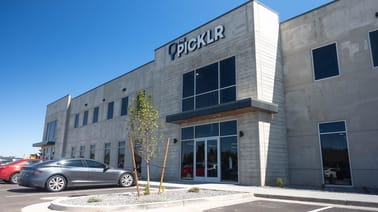
I hate to sound like a broken record, but it's important to note that pickleball real estate needs to expand dramatically in order to meet the demands of the sport's growth.
CNBC predicts 40 million pickle players by 2030, which means at least 280,000 additional courts will need to be built to accommodate that growth. We've covered this before...but recently, we've seen some creative attempts to develop more places to play.
Some seem like better ideas than others. Let's dive in.
Is Re-Zoning the Key to Pickleball Growth?
One example of pickleball court-building ingenuity that we feel can serve as a model can be found in Upstate New York.
The town of Latham used to have a K-Mart. It closed, but until recently, the building wasn't expected to hold much value.
We've seen the same effect on malls in suburban and semi-rural areas across the country: what used to be bustling destinations for adults and bored teenagers alike now stand as sad shells of their former selves.
But these buildings don't have to go to waste. With their high ceilings, large floor spaces, and ample parking lots, they can easily be converted into indoor sports centers.
The Latham, NY center will operate as a "semi-public" club with open tournaments under the name "True Pickleball Club." It is slated to open in Spring 2023, along with a bar/restaurant in the same development.
This is a great example of how pickleball can save disused spaces, sure, but also of how the sport can bring complimentary audiences to other business types such as bars, restaurants, and other entertainment facilities.
It's that promise of community spending that can help municipalities pass re-zoning permits faster than your average development.
An Example of What NOT To Do
While the above example seems like an accessible resource for pickleball players in its community, other approaches don't seem so well-planned.
Players will apparently have to pay a $1,000 "initiation fee" at a facility near The Villages – in Sarasota, Florida, no less.
The complex features 16 courts inside a building over 40,000 square feet. Sounds bigger than a K-Mart, sure, but is it worth such a hefty barrier to entry?
In my opinion, pickleball has to continue to remain accessible to as many new players as possible. After all, it's that very same accessibility which brought its popularity to where it is today.

Love Pickleball? Join 100k+ readers for free weekly tips, news & gear deals.
Subscribe to The DinkGet 15% off pickleball gear at Midwest Raquet Sports









